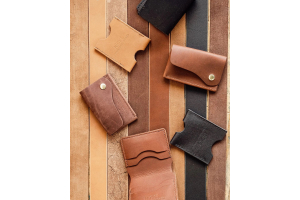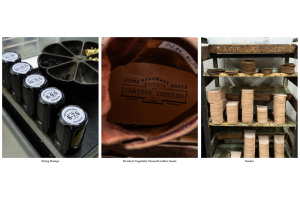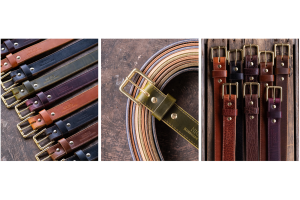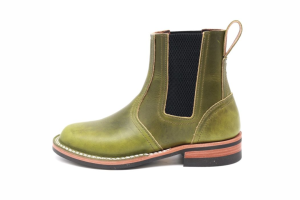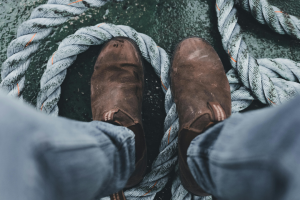Oiled Leather

Key Takeaways:
- Adaptability to Wearers: Oiled leather adapts to the shape of the wearer's feet, providing a personalized and comfortable fit that improves with use. This quality makes oiled leather boots increasingly comfortable over time, enhancing their practicality for everyday wear.
- Aesthetic Evolution: The natural aging process of oiled leather allows it to develop a unique patina, which adds character and aesthetic value to the footwear. Each mark and scratch contributes to a distinctive look, making each pair of boots uniquely personal to its owner.
- Comprehensive Care Guidelines: The article provides detailed guidance on the proper techniques for cleaning, conditioning, and storing oiled leather boots. These practices help extend the life of the boots and maintain their aesthetic and functional qualities, ensuring they continue to perform well in various conditions.
We're not just crafting footwear at Nicks Boots; we're creating legacies. Our commitment to quality and durability is unwavering, using only the finest materials to ensure our boots withstand time and elements.
This piece explores the essence of oiled leather—a top choice for discerning buyers who need boots for both work and pleasure. We'll cover what oiled leather is, its key benefits, essential maintenance tips, and how to choose the right oiled leather boots for your lifestyle, providing all the information you need to make the most of this superior material and keep your boots in top condition for years.


What Is Oiled Leather?
The Tanning Process
Oiled leather is distinguished by its unique tanning process where hides are infused with natural oils like neatsfoot or mink oil. This not only saturates the leather, making it exceptionally durable but also maintains its elasticity and softness, enhancing its practical longevity. The oils penetrate deeply, ensuring that the leather retains these properties even under stress and through various weather conditions, making it a robust choice for footwear.
Characteristics Of Oiled Leather
Key characteristics of oiled leather include its remarkable softness and flexibility, which directly contribute to the comfort and wearability of the boots. This type of leather is particularly resistant to hardening and cracking, often problems with lesser-quality materials. It also naturally repels water, thanks to the oil treatment, which helps prevent moisture from damaging the leather. Over time, these properties ensure that footwear remains durable and comfortable.
Aesthetic Appeal
One of the most appealing aspects of oiled leather is its ability to develop a unique patina over time. This patina is a sign of high-quality leather and is highly valued for its distinctive aesthetic, which adds character to the boots. Each mark and scratch tells a story, enhancing the personal connection between the wearer and their boots. As such, oiled leather products are often seen as more than just footwear; they're a personal journey.
Benefits Of Oiled Leather In Boots
Enhanced Durability
Oiled leather is renowned for its exceptional durability, which is crucial for high-quality boots. The oil treatment deep into the leather enhances its resistance to cracking and drying out, even under strenuous conditions. As a result, boots crafted from oiled leather are more capable of handling tough environments, from construction sites to hiking trails. They are less likely to suffer from environmental damage, such as excessive sunlight or extreme cold, which can degrade lesser materials.
Superior Water Resistance
The natural oils used in oiled leather serve as an effective moisture barrier, significantly enhancing the material's water resistance. This characteristic is invaluable for keeping the feet dry and ensuring comfort in wet conditions. Additionally, the protective oil layer helps prevent stains and simplifies cleaning, as dirt and mud can be wiped away with minimal effort. This water resistance extends the life of the boots, as moisture is a common cause of deterioration in footwear.
Comfort And Flexibility
Oiled leather offers superior comfort and flexibility, adapting to the shape of the wearer's feet more readily than other materials. This adaptability ensures a personalized fit that becomes more comfortable with each wear. The inherent softness of oiled leather also contributes to a reduced break-in period, making the boots comfortable to wear right out of the box. The flexibility aids in movement, making these boots a favored choice for those who are on their feet all day.
Maintaining Oiled Leather
- Regular Cleaning: Regular cleaning is crucial to maintain the integrity of oiled leather. Start by removing any dirt or debris with a soft brush or cloth, ensuring the leather’s surface is clean before applying any products. It’s important to use a cleaner specifically designed for oiled leather to avoid damaging the oils and waxes that protect the leather.
- Conditioning the Leather: Oiled leather needs occasional conditioning to replenish the natural oils lost over time. Use a quality leather conditioner that is compatible with oiled leather to keep the material supple and prevent it from drying out and cracking. This step not only preserves the leather’s durability but also enhances its natural water resistance.
- Proper Storage: When not in use, store oiled leather boots in a cool, dry place away from direct sunlight. Using boot trees can help maintain the shape of the boots and prevent creases and cracks. Proper storage conditions are key to extending the life of oiled leather footwear.
- Avoid Over-Maintenance: It's possible to over-maintain oiled leather, which can saturate the material and reduce its breathability. Apply conditioners and oils sparingly—too much can clog the pores of the leather, leading to stiffness and reduced comfort. It’s crucial to let the boots dry naturally after cleaning and conditioning, without exposure to direct heat sources.
- Dealing with Water Exposure: Despite its water-resistant properties, prolonged exposure to water can still be detrimental to oiled leather. If boots become wet, allow them to dry slowly at room temperature; avoid placing them near heaters or using a hairdryer. Stuffing the boots with newspaper can help absorb moisture and maintain their shape as they dry.
Choosing The Right Oiled Leather Boots
Assessing Your Needs
Before purchasing oiled leather boots, consider the primary use—whether for work, outdoor activities, or casual wear. Different environments and usage require varying levels of durability, water resistance, and comfort. Assessing your needs helps ensure you choose boots that provide the right support and longevity.
Understanding Leather Grades
Not all oiled leather is the same; understanding the grades of leather can significantly influence your decision. Higher quality oiled leather often offers better durability and a more appealing aesthetic. It's important to invest in the highest grade you can afford for the best experience and value.
Fit And Comfort Considerations
Ensuring a proper fit is crucial, as oiled leather will mold to the shape of your feet over time. Try on boots at the end of the day when your feet are large, and wear the type of socks you plan to use with the boots. Properly fitted boots enhance comfort and reduce the likelihood of blisters or discomfort.
Style And Functionality
Choose a style that matches your personal taste and functional requirements. While some oiled leather boots are designed with a focus on aesthetic appeal, others prioritize functional aspects like slip resistance and ankle support. Consider what style and functional features align with your needs.
Long-Term Care Commitment
Remember that choosing oiled leather boots is a commitment to their care. Consider whether you are ready to perform regular cleaning and conditioning to maintain the boots' condition and extend their lifespan. Your readiness to invest time in maintenance should influence your choice.
Common Mistakes In Oiled Leather Care
Over-Conditioning
Over-conditioning is a prevalent mistake that can leave oiled leather too soft and susceptible to damage. Applying excessive conditioner can saturate the fibers, reducing the leather's breathability and leading to a tacky residue that attracts dirt more readily. It’s important to condition only as needed, based on the leather's appearance and feel, to maintain its optimal condition.
Using Incorrect Products
Using the wrong products can severely damage oiled leather, stripping it of its natural oils and protective qualities. Many cleaners and conditioners not specifically formulated for oiled leather can cause drying and cracking. It’s crucial to use products designed specifically for oiled leather to ensure it remains nourished and retains its water-resistant properties.
Neglecting Regular Maintenance
Failing to maintain oiled leather regularly can accelerate its deterioration. Dirt and oils from the environment can build up on the surface, leading to degradation and a loss of the natural characteristics that make oiled leather desirable. Regular, gentle cleaning and timely conditioning can preserve the integrity and appearance of the leather.
Excessive Exposure To Water
Although oiled leather is more resistant to water than other types, excessive water exposure can still penetrate and damage the material. It is important to dry wet oiled leather slowly and away from direct heat sources to prevent the leather from becoming stiff and brittle. Adequate care includes avoiding prolonged wet conditions and properly treating the leather after exposure.
Ignoring The Drying Process
Improper drying can drastically affect the condition of oiled leather. Rapid drying, especially near heat sources, can cause the leather to warp and crack. It is vital to allow oiled leather to air dry at room temperature and to reshape it as it dries to maintain its form and functionality.
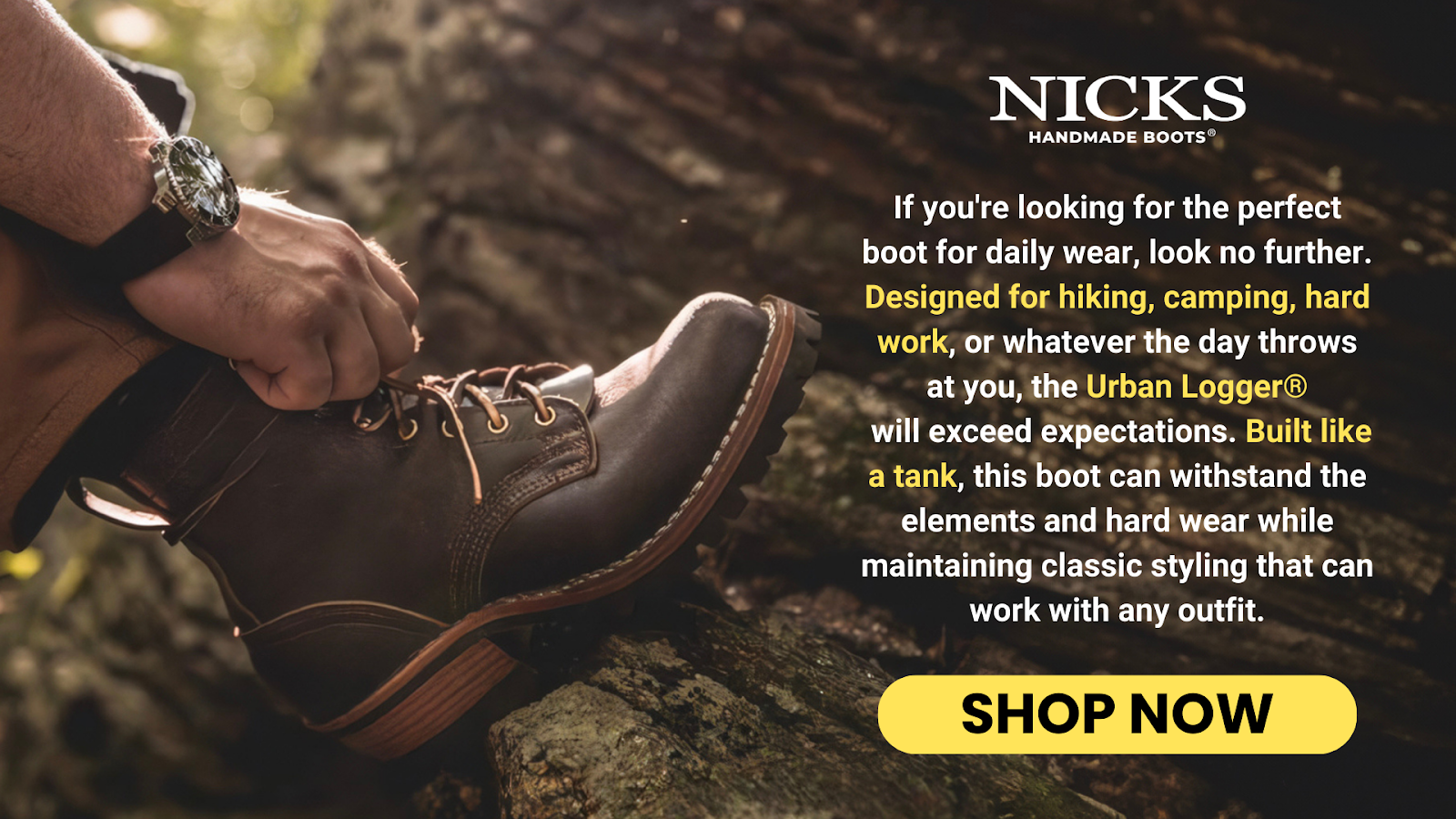

Final Thoughts
Oiled leather represents a blend of tradition and technological advancement in leather craftsmanship, crucial for high-quality boot making. This material choice is celebrated for its durability, water resistance, and ability to adapt comfortably to the wearer’s lifestyle, enhancing personalization as it ages. Choosing oiled leather boots involves recognizing their long-term value, not just in functionality but as an integral part of daily life.
These boots, through meticulous care, develop a unique patina that reflects the wearer’s individual journey. The article encourages potential buyers to see these boots as more than just footwear; they are a lifelong investment that grows and evolves with the user. As such, oiled leather boots stand as a testament to quality and personal growth.
Read also:
Frequently Asked Questions About Oiled Leather
What makes oiled leather different from other types of tanned leather?
Oiled leather is uniquely processed by infusing natural oils during tanning, which enhances its durability and flexibility. This method provides a distinctive softness and resistance to cracking, distinguishing it from other leather types treated with different substances.
Can oiled leather boots withstand heavy rain?
Oiled leather offers enhanced water resistance but is not entirely waterproof. Regular treatments can improve resilience, but it is recommended to avoid prolonged and heavy exposure to water to preserve the leather's integrity.
How often should oiled leather boots be conditioned?
The frequency of conditioning oiled leather boots depends on their usage and environmental exposure. Generally, conditioning every three to six months is advised, with adjustments made based on wear patterns and weather conditions.
What should I do if my oiled leather boots get wet?
Allow wet oiled leather boots to dry gradually at room temperature to prevent damage. Stuffing them with newspaper can aid in moisture absorption and help maintain their shape. Avoid using direct heat sources for drying as this can cause the leather to become brittle.
What are the signs that oiled leather needs conditioning?
Signs that oiled leather needs conditioning include a noticeable lightening of the leather, increased stiffness, and dryness. Addressing these signs promptly by applying a suitable leather conditioner can restore its natural flexibility and appearance.
Is there a specific cleaner for oiled leather?
Using a cleaner specifically formulated for oiled leather is crucial to maintain its condition without stripping essential oils. Such cleaners gently remove dirt and debris while preserving the leather's moisture and protective properties.
Can oiled leather boots be used for hiking and outdoor activities?
Oiled leather is well-suited for outdoor activities due to its robustness and environmental resistance. Its durability and natural water resistance make it an excellent choice for hiking boots and other outdoor footwear.
How do I choose the right type of oiled leather boots for my needs?
Assess the primary use of the boots, whether for work, leisure, or casual wear, and choose based on required durability and comfort. Higher grade oiled leather generally offers better performance and longevity, suitable for various activities.
What mistakes should I avoid in caring for oiled leather boots?
To maintain oiled leather effectively, avoid over-conditioning, using inappropriate cleaning products, exposing the boots to excessive water, and drying them improperly. These practices can lead to premature wear and deterioration of the leather.
How can I prevent my oiled leather boots from cracking?
Regular maintenance is key to preventing cracking in oiled leather boots. Clean and condition the leather periodically using products designed for oiled leather to ensure it remains supple and resistant to environmental stresses.
